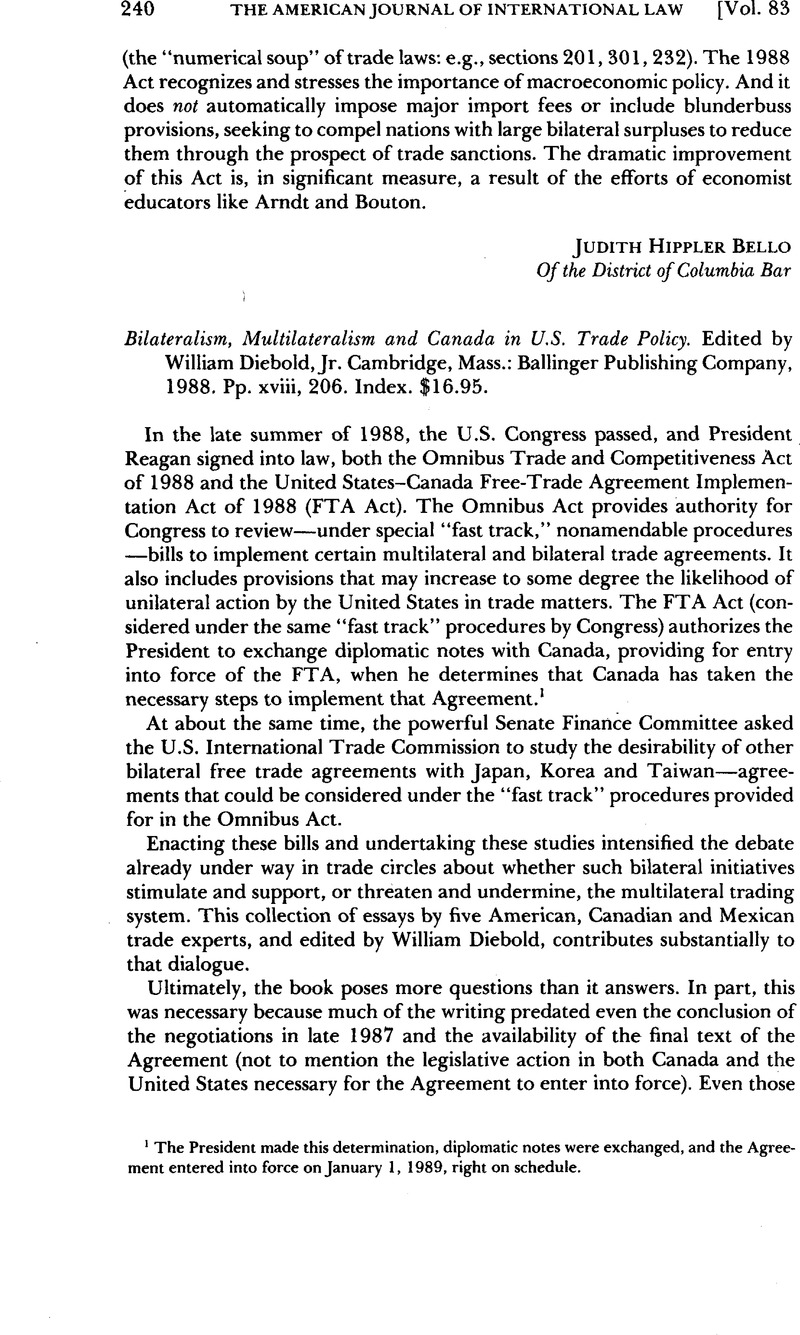No CrossRef data available.
Article contents
Bilateralism, Multilateralism and Canada in U.S. Trade Policy. Edited by William DieboldJr. , Cambridge, Mass.: Ballinger Publishing Company, 1988. Pp. xviii, 206. Index. $16.95.
Published online by Cambridge University Press: 27 February 2017
Abstract

- Type
- Book Reviews and Notes
- Information
- Copyright
- Copyright © American Society of International Law 1989
References
1 The President made this determination, diplomatic notes were exchanged, and the Agreement entered into force on January 1, 1989, right on schedule.
2 In fact, the Agreement covers over 150 specified services industries.
3 Winham singles out in his essay the Agreement’s “pathbreaking” provisions on services, investment and immigration. P. 53.
4 In his essay, Smith stresses that the Agreement creates tighter discipline, which could in fact serve to reinforce the global trading system. P. 88.
5 The U.S. House of Representatives passed implementing legislation on August 9 by an overwhelming vote of 366–40; the Senate followed suit on September 19 by an equally lopsided vote of 83–9. See Farnsworth, How Congress Came to Love the Canada Free-Trade Bill, N.Y. Times, June 5, 1988, §4, at 4, col. 1.




